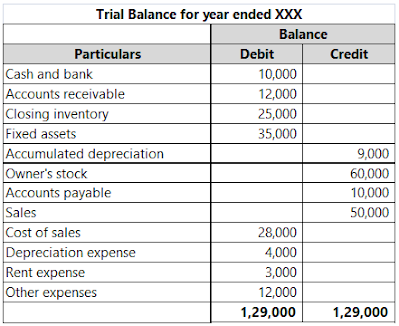Difference Between Ledger And Trial Balance
Financial statements — profit and loss account (or income statement) and balance sheet – indicate a company's financial situation. The transactions must be properly recorded in the books of accounts in order for the financial statements to provide a truthful and fair view of the financial status.
Accounting in the journal, posting to ledger accounts, and generating the trial balance are all part of the accounting cycle from where transactions move to the financial statements.
The definition and differences between ledger and trial balance, two crucial processes in the accounting cycle, are discussed in this article.
Definitions
What is Ledger Account?
The ledger is the main account book, and it contains a complete list of all accounts that are affected by business operations. All transactions recorded in the journal are moved to, or posted to, the appropriate ledger account. As a result, the ledger is a detailed account-by-account record of all business transactions.
All real, personal and nominal accounts are kept in the ledger
The following is an example of a ledger account:
The ledger account is prepared in the 'T' format. All account debits are posted on the left with the prefix 'To,' and all account credits are recorded on the right with the prefix 'By.' Each ledger account is totaled at the conclusion of the accounting period, and the balanced amount is carried forward to the profit and loss account or balance sheet, as appropriate.
The trial balance is also prepared using the ledger account balances.
What is a Trial balance?
Trial balance is a list of all real, personal and nominal account balances compiled from the individual ledger accounts.
The trial balance is prepared in a columnar format, with columns on the left showing debit balances and columns on the right reflecting credit balances.
An example of a trial balance is as follows:
The trial balance will tally if transactions are properly recorded using a double entry accounting system, i.e., the total of debit balances will equal the total of credit balances.
The trial balance is a summary of all account balances after all business transactions for a given accounting period have been recorded. The trial balance is used to ensure that all of the accounts are balanced.
Difference Between Ledger And Trial Balance Illustration
The following is a list of the differences between ledger and trial balance
1. Meaning
The ledger is the principal book of accounts, where all business transactions are organized and recorded account by account. A trial balance is a list of all real, personal, and nominal account balances prepared from ledger accounts.
2. Hierarchy in accounting cycle
The ledger is a second-entry book that is prepared by posting entries from the journal. Following the posting of all ledger accounts, a trial balance is prepared.
3. Quantum of information
Since each accounting entry is posted entry by entry to the respective account, the ledger includes comprehensive information on all business transactions. The trial balance, on the other hand, is merely a summary of ledger account balances at the conclusion of the accounting period, therefore it has minimal information.
4. Purpose for preparation
The ledger's purpose is to collect all journal entries by account and determine account balances as a foundation for preparing financial statements.
The objective of a trial balance is to ensure that all debits and credits are equal and to ensure that the books are balanced.
5. Timing of preparation
Throughout the year or the accounting period, ledger accounts are posted. To summarize the account balances, a trial balance is usually prepared once at the end of the accounting period.
6. Format
The ledger is formatted in the 'T' format, with debits in the left column and credits in the right. A columnar format is used to prepare the trial balance.
7. Balancing and tallying
At the end of the accounting period, ledgers are tallied to establish account balances that will be transferred to the profit and loss account and balance sheet. However, there is no need to add up the debits and credits. At the end of the accounting period, the trial balance is summed, and the debits and credits must balance.
Conclusion – Ledger Account Vs Trial Balance:
While both the ledger and the trial balance are important components of a double entry accounting system, they serve different purposes. Accountants and auditors can track business transactions using ledgers, which are part of the fundamental books of accounts.
Investors do not have access to ledgers; instead, they must rely on the trial balance and financial statements to assess a company's financial status.













